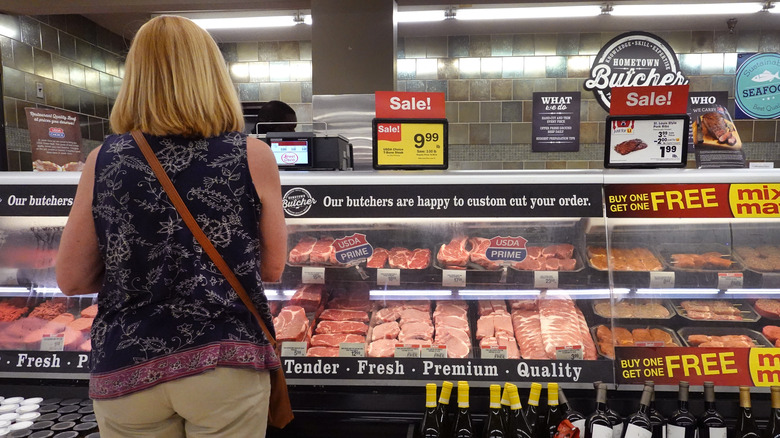Restaurant Chains And Food Brands Clash Over Affordability Of Eating In
July brought both good news and bad news for U.S. consumers because while this month's inflation saw a decline, food prices didn't, rising by 1.3% from the previous month, per the U.S. Bureau of Labor Statistics. And while we can easily explain that — FMI The Food Industry Association's Andy Harig said the grocery spike is the net effect of issues that have plagued the grocery industry for years, including labor problems, transportation inefficiencies, and climate change per FoodNavigator-USA — what isn't clear is what consumers can do about it. But restaurants think they have the answer, which is for people to eat out more.
Statistics appear to bear this theory out. Per The Wall Street Journal, grocery prices were up 13.1% from the month before, while restaurant prices rose by 7.6%. And this, the publication says, is giving restaurants a reason to say people should be eating out more.
The Wall Street Journal also notes that the message isn't telegraphed by fast-food chains only but also by sit-down restaurants. As proof, it cited statistics involving most-watched ads, of which 58% mentioned special offers, discounts, and mobile app or loyalty benefits from May to August.
Inflation is keeping prospective diners from eating out
The change in messaging comes after customers said they were eating out less in order to curb the cost of their food bills. A survey reported by Restaurant Business showed that 80% of U.S. customers were eating out less, and about 75% said they were going to bars less often.
And while restaurants do have higher bills to pay than groceries do — after all, they also have to consider covering rent and labor costs even as they battle rising ingredient costs — The Wall Street Journal said more customers are buying meals at fast food restaurants instead of going to the grocery stores. As one North Carolina foodservice worker said, "I literally cannot remember the last time I made myself a nice, home-cooked meal. Grocery prices are so high right now," she said. To prove her point, a KFC meal cost her $7, while her grocery bill was $19.
But even as food costs rise, The Wall Street Journal says that groceries, nationally branded food manufacturers, as well as meal-kit manufacturers, are pushing the idea that ultimately, eating at home is still more economical. To do this, they are trying to change how they market their products by showing that buying ingredients still costs less than eating out.

